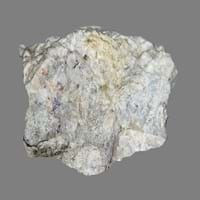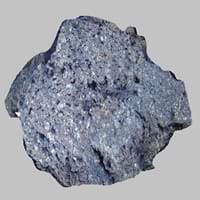Definition
Skarns are formed during regional or contact metamorphism and from a variety of metasomatic processes involving fluids of magmatic, metamorphic, and/or marine origin
Mugearite is a type of oligoclase bearing basalt, also comprising of olivine, apatite, and opaque oxides
Origin
USA, Australia
Skye, Scotland
Discoverer
Tornebohm
Alfred Harker
Etymology
From an old Swedish mining term originally used to describe a type of silicate gangue or waste rock.
From mugear + -ite
Class
Metamorphic Rocks
Igneous Rocks
Sub-Class
Durable Rock, Hard Rock
Durable Rock, Medium Hardness Rock
Group
Not Applicable
Volcanic
Other Categories
Fine Grained Rock, Opaque Rock
Opaque Rock
Texture
Earthy, Mud-rich, Rough
Glassy, Massive, Porphyritic, Scoriaceous, Vesicular
Color
Black, Brown, Colourless, Green, Grey, White
Black, Brown, Light to Dark Grey
Durability
Durable
Durable
Scratch Resistant
Yes
Yes
Appearance
Dull
Dull and Soft
Interior Uses
Decorative Aggregates, Entryways, Interior Decoration
Floor Tiles, Flooring, Homes, Hotels
Exterior Uses
As Building Stone, As Facing Stone, Garden Decoration, Paving Stone
As Building Stone, Garden Decoration
Other Architectural Uses
Curbing
Curbing
Construction Industry
As a Flux in the Production of Steel and Pig Iron, As a Sintering Agent in Steel Industry to process Iron Ore, As Dimension Stone, Gold and Silver production, Manufacture of Magnesium and Dolomite Refractories
As Dimension Stone, Cobblestones, Rail Track Ballast, Roadstone
Medical Industry
Not Applicable
Not Yet Used
Antiquity Uses
Artifacts, Monuments, Sculpture
Artifacts, Monuments, Sculpture
Commercial Uses
Creating Artwork, Gemstone, Jewelry, Metallurgical Flux, Source of Magnesia (MgO)
Creating Artwork
Types
Endoskarns
Alkaline Basalt, Boninite, High Alumina Basalt, Mid Ocean Ridge Basalt (MORB), Tholeiitic Basalt, Basaltic trachyandesite, Mugearite and Shoshonite
Features
Host Rock for Lead, Zinc and Copper Deposits
Has High structural resistance against erosion and climate, Very fine grained rock
Archaeological Significance
Famous Monuments
Data Not Available
Data Not Available
Famous Sculptures
Data Not Available
Data Not Available
Pictographs
Not Used
Used
Petroglyphs
Not Used
Used
Formation
Due to change in environmental conditions, rocks are heated and pressurized deep inside the Earth's surface. Skarn is formed from the extreme heat caused by magma or by the intense collisions and friction of tectonic plates.
Mugearite forms when lava reaches the Earth's surface near an active volcano. The temperature of lava is between 1100 to 1250° C when it gets to the surface.
Mineral Content
Calcite, Enstatite, Epidote, Garnet, Magnetite, Pyroxene, Titanite
Olivine, Plagioclase, Pyroxene
Compound Content
Au, CaO, Carbon Dioxide, Cu, Fe, MgO
Aluminium Oxide, CaO, Iron(III) Oxide, FeO, Potassium Oxide, MgO, MnO, Sodium Oxide, Phosphorus Pentoxide, Silicon Dioxide, Titanium Dioxide
Types of Metamorphism
Burial Metamorphism, Cataclastic Metamorphism, Contact Metamorphism, Hydrothermal Metamorphism, Impact Metamorphism, Regional Metamorphism
Burial Metamorphism, Impact Metamorphism
Types of Weathering
Not Applicable
Biological Weathering, Chemical Weathering
Types of Erosion
Not Applicable
Not Applicable
Grain Size
Fine Grained
Not Applicable
Fracture
Irregular
Conchoidal
Streak
Light to dark brown
White to Grey
Porosity
Less Porous
Less Porous
Luster
Waxy and Dull
Not Available
Compressive Strength
Not Available
Cleavage
Slaty
Not Applicable
Specific Gravity
2.86
2.8-3
Transparency
Opaque
Opaque
Density
2.8-2.9 g/cm3
2.9-3.1 g/cm3
Resistance
Heat Resistant
Heat Resistant, Pressure Resistant, Wear Resistant
Deposits in Eastern Continents
Asia
China, India, Russia, Saudi Arabia, South Korea, Sri Lanka
India, Russia
Africa
South Africa, Western Africa
South Africa
Europe
United Kingdom
Iceland
Others
Not Yet Found
Not Yet Found
Deposits in Western Continents
North America
Canada
Canada, USA
South America
Brazil, Colombia, Paraguay
Brazil
Deposits in Oceania Continent
Australia
Central Australia, Western Australia
Not Yet Found
All about Skarn and Mugearite Properties
Know all about Skarn and Mugearite properties here. All properties of rocks are important as they define the type of rock and its application. Skarn belongs to Metamorphic Rocks while Mugearite belongs to Igneous Rocks.Texture of Skarn is Earthy, Mud-rich, Rough whereas that of Mugearite is Glassy, Massive, Porphyritic, Scoriaceous, Vesicular. Skarn appears Dull and Mugearite appears Dull and Soft. The luster of Skarn is waxy and dull while that of Mugearite is not available. Skarn is available in black, brown, colourless, green, grey, white colors whereas Mugearite is available in black, brown, light to dark grey colors. The commercial uses of Skarn and Mugearite are creating artwork, gemstone, jewelry, metallurgical flux, source of magnesia (mgo).










